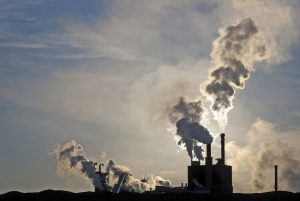October 1 marks the beginning of phase one of the European Union’s landmark Carbon Border Adjustment Mechanism (CBAM). Reactions are mixed: for some, it’s an exciting world first that will account for the “real cost” of carbon emissions; for others, it’s a classic case of developed economies dumping their climate responsibilities onto the developing world.
Although the exposure of Asian markets is initially limited, CBAM could signal a major shift in both emissions reduction and global trade.
CBAM will effectively extend the EU’s Emissions Trading Scheme (ETS) to select imports into the bloc. The move aims to address the asymmetrical policy environment faced between the EU’s domestic industry and other jurisdictions, a twin bid to ensure the EU’s ambitious emissions policies do not lead to “carbon leakage” and encourage partner countries to implement similarly ambitious mechanisms. CBAM will initially cover iron and steel, cement, aluminum, fertilizers, electricity, hydrogen and a limited number of downstream products containing iron and steel; however, the list will likely expand as the program matures.
CBAM fixes the earlier rollout of the EU’s ETS, which saw some industries effectively given free allowances from the scheme to reduce the risk that those industries might relocate to countries with fewer environmental regulations, a process known as “carbon leakage.”
The transition phase of CBAM, from October 2023 to December 2025, will require exporters to submit emissions reports to importing partners, including embedded emissions of the goods and any carbon price paid to the exporting country.
From January 2026, CBAM will be fully implemented and require importers to purchase certificates based on an assessment of their embedded emissions marked against the EU’s ETS; additionally, any price paid to the exporting country will contribute to CBAM certificates.
For Asian economies broadly, the initial impacts are predicted to be limited. However, some industries, mainly medium to small companies, might strain to comply with the documentation requirements. In the future, CBAM is likely to expand to other products, so essentially, the EU is putting its exporting partners “on notice” to clean up their emissions supply chains.
The uptake of emissions trading schemes, or carbon taxes, is quite mixed in Asia, but the trend line is rising. China, Indonesia, India, Japan, Malaysia, the Philippines, Singapore, South Korea, and Vietnam have either implemented or are scheduled to implement an ETS and/or pricing mechanism. However, the EU’s ETS is leagues ahead of anything in Asia. As of writing, the EU price per metric ton of carbon dioxide equivalent (mtCO2e) stands at 88.2 euros ($93.3) compared to China’s 65.4 yuan ($8.9) or South Korea’s roughly 17,000 won ($12.5) per mtCO2e.
Asian economies will have to substantially ramp up their energy efficiencies, emissions reductions, and domestic carbon prices to fend off potentially hefty CBAM certificates.
The EU is ASEAN’s third largest trading partner, behind China and the United States. For example, Thai exports covered by CBAM accounted for almost 1.5 percent of Thailand’s total exports in 2022. However, analysis by the New Climate Institute suggests that although Southeast Asian markets are exposed, vulnerability to instability and losses will be limited initially.
The Indian market, on the other hand, may face challenges adjusting to the new legislation in Europe. Naina Bhardwaj from India Briefing said, “Indian exporters are likely to face higher prices, reduced competitiveness, and lower demand for their goods in the EU market.”
Indian steel production is particularly energy and emissions-intensive, and the Indian government has done little to decarbonize the high-emitting industry. And with 27 percent of India’s iron, steel and aluminum products going to the EU, this poses a significant burden for Indian companies.
The Indian government has been publicly displeased with CBAM, allegedly planning to file a complaint to the World Trade Organization. Recently, in response to CBAM, the Indian government is reportedly considering an EU-specific carbon tax to repatriate losses that would have otherwise been given to the EU. However, the exact nature of the response remains speculation.
For critics, the biggest sticking point is that CBAM will hit middle- and low-income countries the hardest, often countries that have contributed the least to the climate crisis, which sours the gains for the environment. Efforts such as the EU’s Social Climate Fund have been introduced to curb these impacts and mobilize assistance for those who need it, yet, to date these measures only focus on Europeans.
A proposal published in the journal Nature suggests CBAM could be improved by implementing an “inclusive recycling of revenue scheme” that would make the mechanism more palatable to third parties and address climate justice issues inherent in CBAM. The scheme would redirect revenue from CBAM certificates to climate-vulnerable countries to assist in developing green technologies and climate adaptation, potentially even contributing to a Loss and Damages Fund.
As the U.N. Framework Convention on Climate Change falters to adequately address the climate crisis, ambitious nations and regional blocs like the EU are increasingly considering international options outside the Convention. Environmentally ambitious economic groupings may form into exclusive climate clubs and further fragment global trade in favor of intra-club trade. With Canada, the United Kingdom, and the United States looking at CBAM with interest and considering their own border carbon adjustments, this reality may be closer than first thought.
But steps must be taken to ensure that vulnerable countries are not left behind in the race to net zero.

































